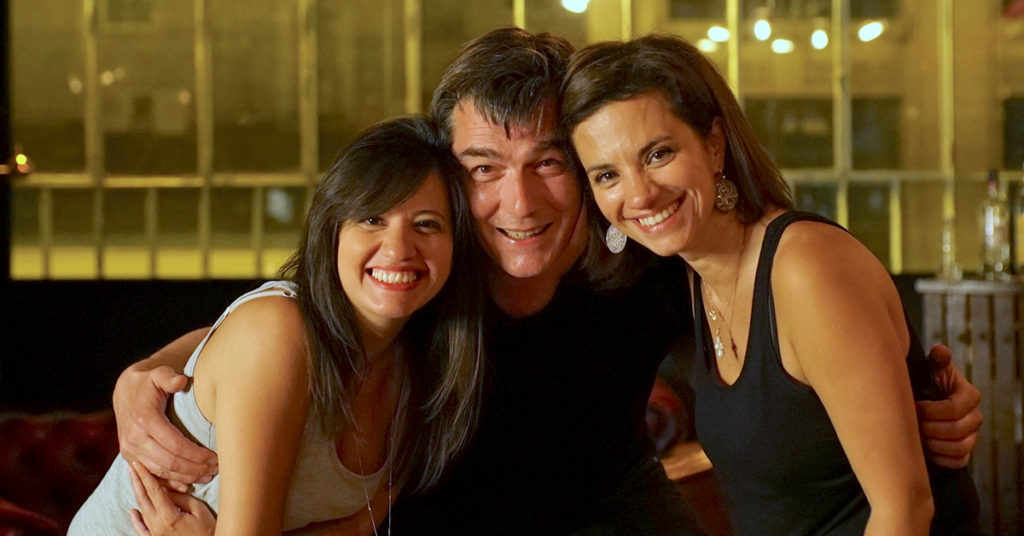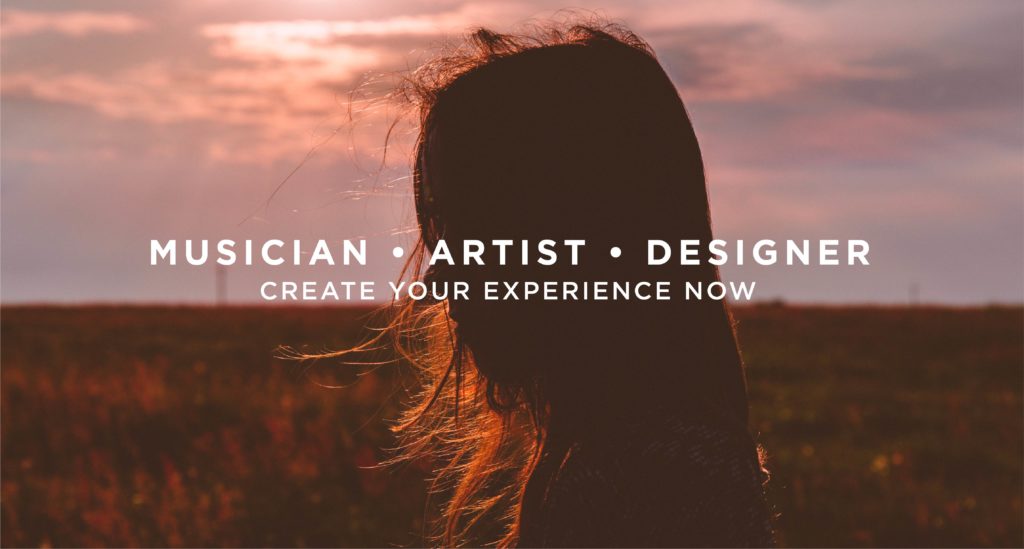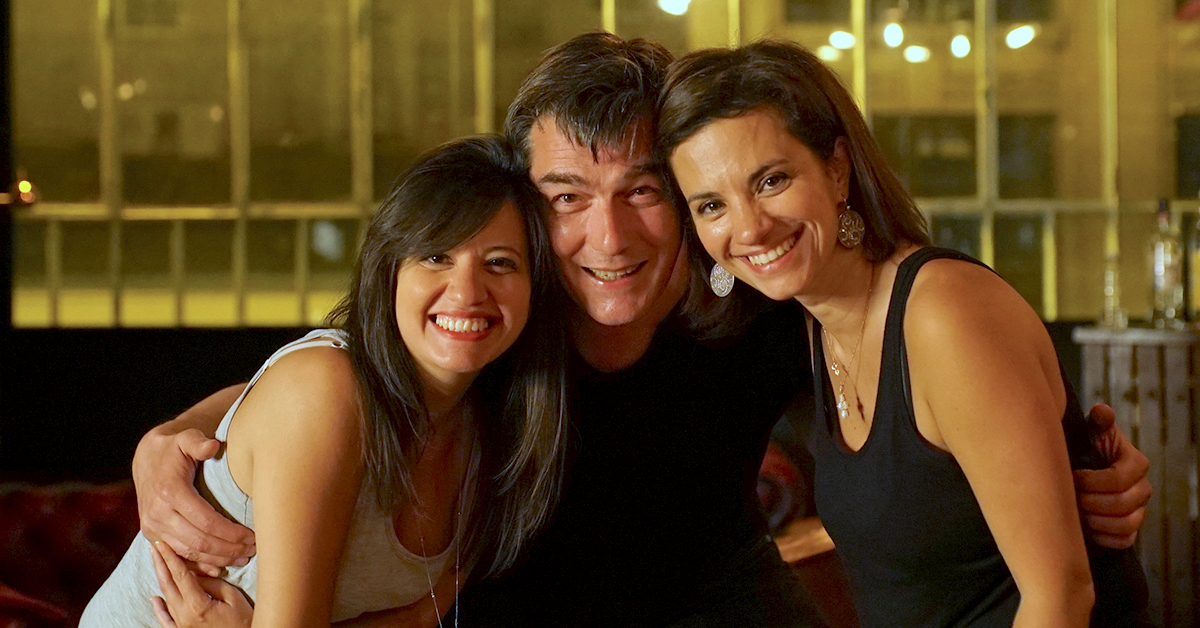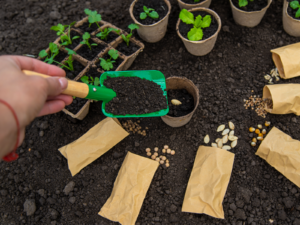
When a TV producer teams up with two sisters who happen to be marketing consultants, a MAD thing is born. M.A.D. … Music. Arts. Design. an entertainment platform for millennials, serving them with a plethora of creative artists.
Lise and Rima Yacoub’s careers took them through marketing consultancy projects between Paris and Beirut. Their portfolio covered a variety of clients, from the IT to the capital markets and eventually the entertainment and creative industry. “When you dive into the creative industry you understand that it’s a big interconnected market,” explains Rima. “As consultants, we worked with different types of clients, TV stations, production houses, and artists. At some point, we got introduced to Anthony Touma, an emerging Lebanese singer, who was planning his concert and needed marketing support. We did the marketing for his concert and there was a good feeling about this collaboration for both of us. His needs were a lot wider than this particular concert, and so we became his managers. A nice part of being an entrepreneur is that you can take projects that interest you.”
Gap in The Industry
Throughout the next two years, the sisters signed on independent emerging artists and managed from concerts to video clips to negotiations with labels, all while meeting other artists along the way who also sought them out for representation. “We were not structured for it,” explains Rima.
“Working with emerging artists was a great opportunity, but we noticed the same problems that were common to all artists from the different ends of the creative industry: the lack of visibility, their inability to promote themselves, and the lack of funding for their projects. They have a lot of projects tossed in the drawer because they are focused on their art and not on its management and sales.
“Despite how technology has altered the course of many industries, it felt like the way things were being done in the creative industries had remained pretty much the same. They are very much organized in silos, the music industry on its own, with the same pattern: the artist signs with a label, the label puts all its money into one or two or three artists. It is very conventional, and you find the exact same patterns with the photographers in the galleries, and the filmmakers in distribution.
Nowadays, artists are multi-disciplinary and can’t fit into one box specifically, therefore find difficulty in being promoted through these traditional mono-channels.”
“One morning, Lise and I woke up with the same idea. We had organized a concert the night before in Beirut while we had been, in parallel, working on a TV show in Paris with Bruno Waitzmann, who also became our partner, and we felt that everything just fit together.
We knew the problems of the artists, we understood the needs of the brands that we were already working with to sponsor the artists, and we saw that the audience was key. We decided to create a platform that would link artists, brands and their audience. All the players, the label houses, the TV stations, and the radios were to become partners in our ecosystem. And, this is how MAD was born.
We wrote everything down on a piece of paper, and we started schematizing for it to be scalable and to cater to these needs. We built our online platform, our marketplace within the summer and launched it in November.”
MAD: Music. Arts. Design.

MAD has been running for 2.5 years now and promotes more than 800 artists. They are a new generation of talent hunters and producers. The entertainment platform serves a wide audience of millennials, while also providing funding and promotion for artists and creative content for brands.
Artists subscribe to the platform and they are directly part of the MAD network. They manage their own profiles, add their own content, and they can even sell items directly on the platform. The public can view, purchase and subscribe to the platform and discover artists through the platform’s own content.
Also, through the platform, brands can book artists for collaborations and can sponsor projects. The most interesting aspect for artists is the ongoing competitions done in partnership between MAD, cash money offered by MAD and the brands, and the huge exposure the artists receive, which also allows them to be noticed by the brand for potential collaborations.
“The artists come to us because they lack promotion and funding which they find automatically on MAD. Millennials just want to be entertained, they are looking for new experiences. Brands are always looking for new, less intrusive ways to reach their target audience. They have noticed that all the traditional marketing doesn’t work anymore, so they come to us because they like our content and they like to be associated with it,” sums it Rima.
“They have penetrated a huge market that is ready to move away from the traditional way of advertising. Brands are looking for alternative ways of contacting and connecting with millennials and this is exactly what MAD is providing in a very cost-effective way and it is getting a lot of traction with these brands,” explains Constantin Salameh, Senior Coach and Investment Advisor with Berytech.
MAD has also proven that they have a scalable model. They have shown that the level of repeat business is more than 65% and that they can multiply their revenue by a factor of 2, 3, potentially 4 in the years to come. These are reasons why I believe MAD is a great opportunity coming in at the right time and addressing the pain points that the leading brands had been facing over the last years and did not find the right solution for.”
Content Marketing
To promote the artists, MAD constantly produce their own content including TV shows, web shows, events and competitions. The platform also chooses artists to highlight on their platform lineup which rotates between different artists and projects. This provides them with direct visibility to the platform’s audience – free of charge.
To be able to promote artists, the platform first needs to promote itself. Rima elaborates about their own non-intrusive marketing tactics: “We are always talking about non-intrusive content and this is something we are trying not to change. A lot of brands are shifting towards us and a lot of ad agencies come to us because of that. You will not see a billboard or a traditional TV show or a traditional ad. Our strategy is to spread exclusive MAD content, just content, everywhere.”
“We market ourselves through what we do. You will discover the platform through the artist. We have no ownership of the artist or royalties on their artwork, but what they sell on our platform is exclusive, they can’t sell it anywhere else. So, if you like a product from this artist you will find it on MAD and that’s how you discover us. You see the artist on a show, TV or on the web, and find out that MAD produced this content. You go to an event and it is powered by MAD as well. You hear about a MAD competition through the different creative channels such as creative schools and it leads you back to us. We are a bit everywhere.”
A Growing Reach
The platform’s primary audience is French as its principal expansion areas are the French-speaking countries in Europe. Second, comes the Lebanese audience as the platform plans to grow in the Middle East.
The platform has given artists a diverse audience beyond their personal channels. It has also created a flow that facilitates collaborations between the different creative communities allowing them to share experiences and co-create. This has inspired the founders to add a talent sourcing option to the upcoming update to the platform.
“Our own social channels provide us with around 100,000 viewers, which we can reach directly,” estimates Rima, although she was not able to pin down a number on the total reach of the platform’s content across different channels.
“The platform has relied on multi-distribution channels since its launch: we work with TV channels and we have agreements with aggregators who distribute our content. If you factor in the syndicated communities and the audiences of each artist, plus all the broadcasters who also share our content, our reach can be in millions. Between the TV shows, the web shows, and the events, it becomes hard to measure. We are aiming to be the main broadcasters of our content in our future expansion, this way we can measure it better.”
MAD Entrepreneurs

MAD were among the ventures who received seed funding from Lebanese Business Angels, the graduates of the first cohort of the Seeders MBA program managed by IM Capital. “I had the opportunity to work with MAD for the past 2 years as their coach and advisor,” explains Constantin Salameh.
“MAD is a unique platform. They have the first-mover advantage in the region, as no similar platform exists. They have managed over the past 2 years to go through 2 rounds of funding and they are preparing now for a series A. They raised around $400K in the past two years and they will be raising between $1.5 and $2M in the coming round.
They have been very successful in proving that the company can scale, they started their first year with about $35k in revenue they built it up and multiplied almost 10 times to about $290K during 2018 and they are exponentially scaling up. They have also proven that they can have a high level of recurrent business. These are two important dimensions that helped to get great visibility and great market valuation.
The team is a proven one, they have in between the three of them close to 50 years of experience across the field and they have very complementary skill sets. Together with a team of 10 people, they form a unique skill set and a proven track record of value creation with other companies.
From her side, Rima’s hope for the next few years is to get the platform deployed internationally, to have MAD on every continent. “We want to cater to all these artists and truly accomplish our mission to change how the creative industry works, to create a visible shift. The streaming platforms have changed how you consume music, the VOD platforms have changed how you consume film, what if we changed how the entire creative industry works!”








